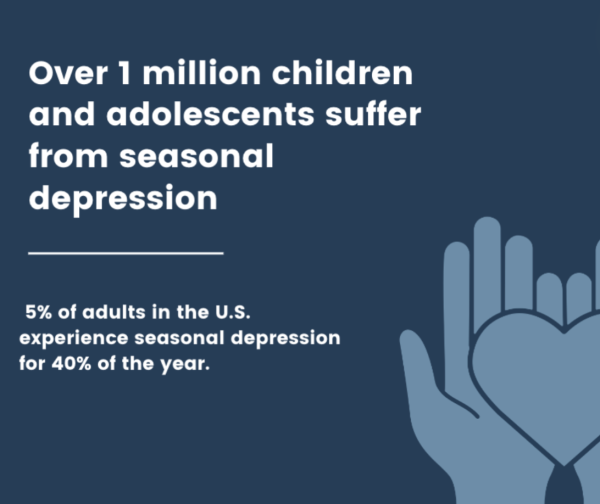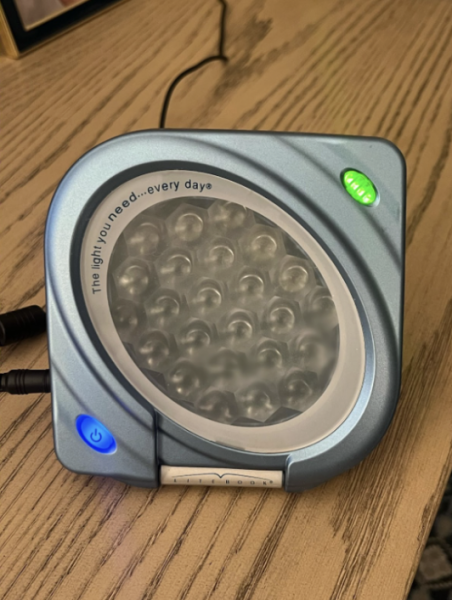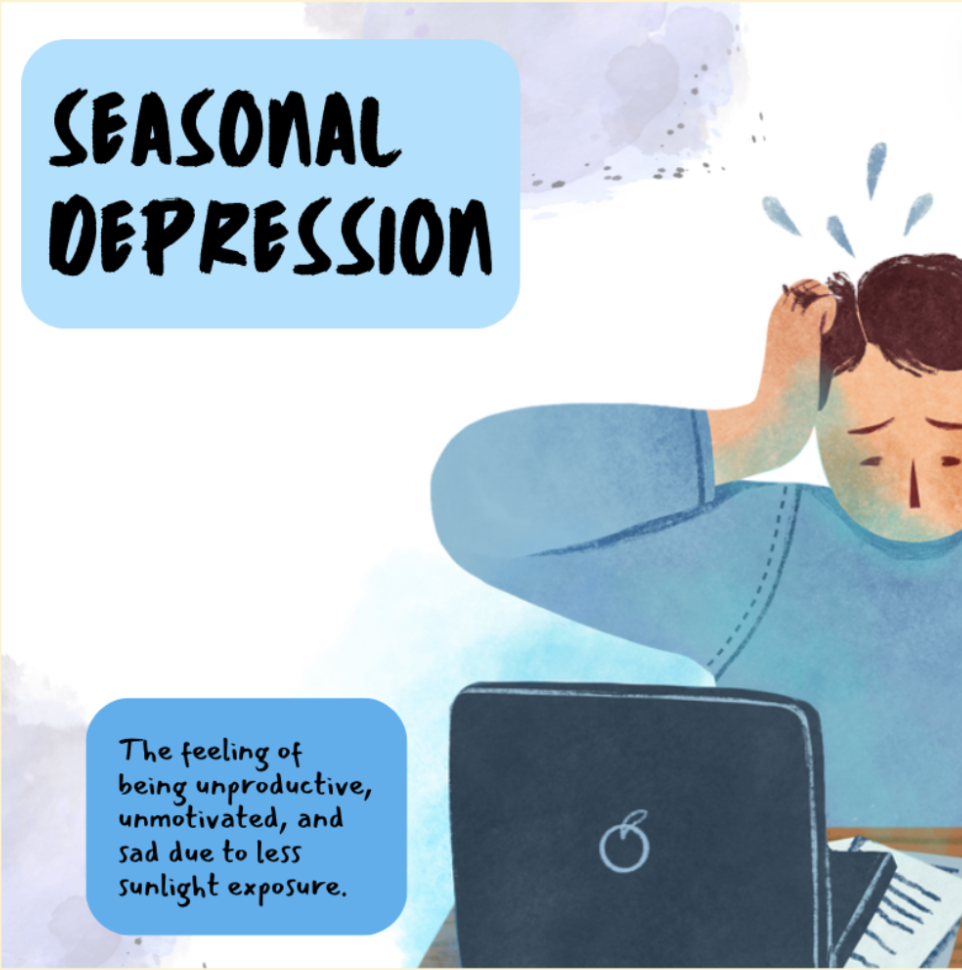Did you know that over 1 million children and adolescents suffer from seasonal depression? With a number that high and, unfortunately, a number that is continuing to grow, we need to be more comfortable with talking about this issue, those suffering, the effects, and some possible solutions.
About 5% of adults in the U.S. experience seasonal depression about 40% of the year.
Seasonal depression (SAD) is characterized as a mood disorder that occurs during the same time each year creating a sense of depression. Those who suffer from this type of depression normally feel their worst in the winter seasons up until spring.
This occurs in climates that have less sunlight present during specific months.
The lack of sunlight throughout the months of winter creates a sense of sadness, loneliness, and overall feeling deprived of happiness since the weather and sky is gray, cloudy, and cold constantly.
For those who thrive when the weather is sunny and warm, during these times, it is especially difficult for these people to function. Ultimately leading people to have lower energy as well as a harder time concentrating in their daily tasks.

Not only do people not function as well with seasonal depression. But it heavily impacts their sleep cycles, mood, irritability, weight gain, and creates feelings of hopelessness and guilt.
Personally, I began to see a shift in my own personality as soon as the cold hit this past winter. I noticed myself dreading going out places instead of wanting to spend time outside. It was just too gloomy and there seemed like nothing was lively or colorful outside.
Each day I would wake up to a gray sky, cold weather, and rain or snow coming down. It seemed like there was nothing to look forward to each day with such sad feeling weather.
It definitely caused my motivation and self determination to decrease as I just felt there was no point in getting things done. As the season went on and it got gradually colder, it seemed harder and harder to get up for school in time in the morning.
But as soon as spring break hit this year, I had this urge of excitement and motivation I hadn’t had in what felt like months. Traveling to our spring break destination and getting off the flight immediately gave me that breath of fresh air I had been longing for since last summer.

Feeling the warmth, clear skies, and seeing the sun immediately gave me a serotonin boost. I experienced a large sense of relief from feeling so down these past few months.
After spending about a week in such a warm tropical place, it was eye-opening to see how much my mood truly depended on the weather. So when I returned home, I ultimately felt motivated to start researching alternative solutions to help with seasonal depression.
Before researching I decided to talk to my mom about the issue and feeling that had been surfacing for these past few months. Come to find out she, herself, feels the exact same way during the months of winter. So years ago, she took it upon herself to buy a light that mimics the feeling of outdoor sunshine and warmth.
This treatment is called light therapy or phototherapy, which is a great alternative for those with seasonal depression or just those lacking that sense of outdoor light. This small light has the ability to mimic outdoor sunshine and warmth that one would normally feel on a sunny day.
My mom uses this device whenever she is feeling less motivated due to the cloudy and gray weather. She keeps it right on her work desk which helps her stay focused. She said it has tremendously helped boost not only her motivation, but also her mood and sense of productivity during her average work day.

Additionally, another great solution for seasonal depression includes talk therapy. This therapy is aimed to help people talk through their thoughts, feelings and emotions. It is proven to help reduce those anxious and depressive feelings and improve their overall mental state.
Lastly, people can turn to medications as well to help resolve their feelings of seasonal depression. Medication can help with severe cases that don’t seem to go away even after trying/using the natural alternatives and solutions.
After researching and realizing the extent of seasonal depression among teens, it’s truly mind blowing to know how many struggle with it but stay silent. Even if I can’t consider my case to be “true” seasonal depression, I definitely see a connection and correlation between my productivity and the weather.








